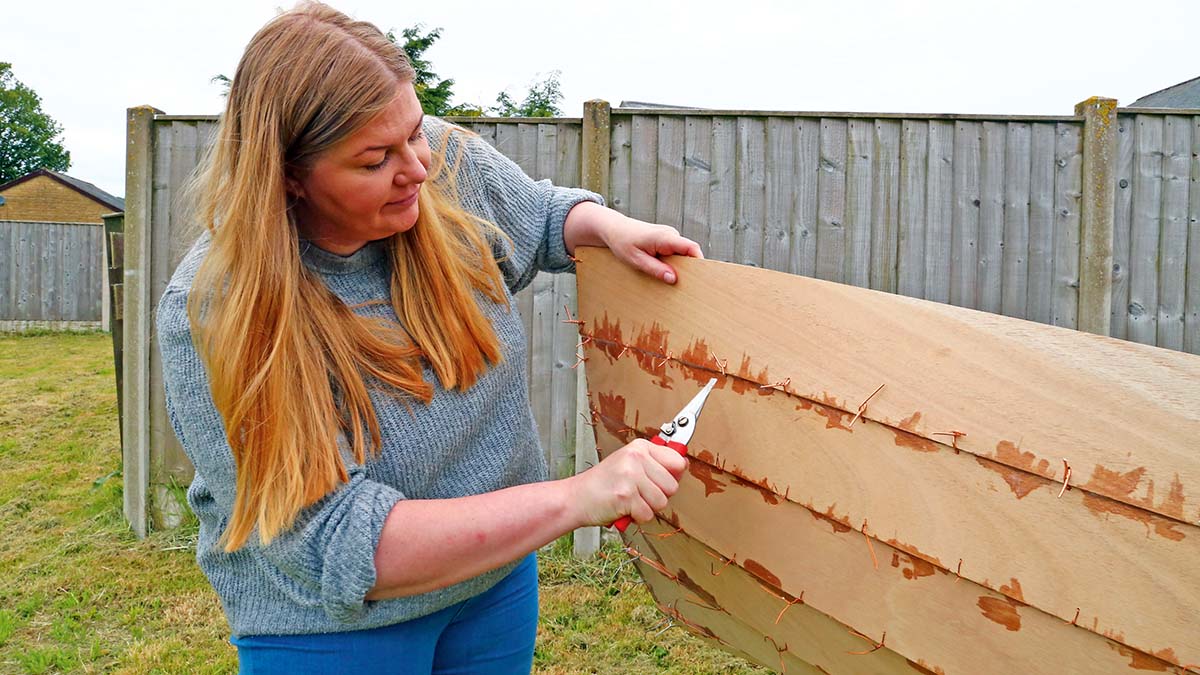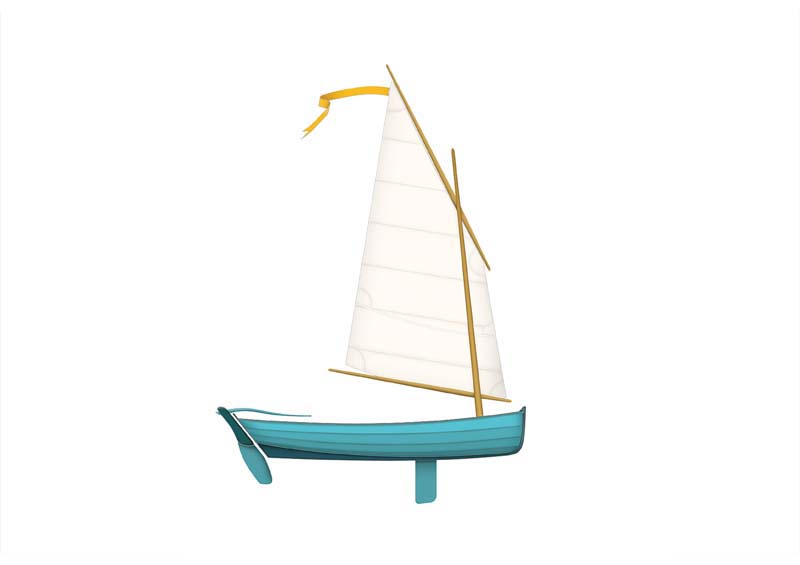Once used by the trappers, traders and hunters of the New World, the Adirondack Guide Boat is just as relevant today, says Roger Nadin...
There’s a boating truism that says, ‘if it looks right, it is right.’ Take a look at a lovely old J Class yacht, sleek canoes, delicate skiffs, elegant Norwegian færings and other boats with delightfully sweeping sheers and you’ll see what I mean.
These boats were built with a purpose by those skilled in the art of boatbuilding and they evolved over long lifespans into super-efficient and durable designs that remain with us today.
Around the world many of these were introduced by European settlers who opened up America, Australia and New Zealand, but some of the most successful ones were adapted from the boats already used by the indigenous populations.
After all, the local populations were always rather more experienced in the specific demands and their vessel designs had already had hundreds, even thousands of years to develop before the white man invaded. In many cases, the designs have changed little with only the method of build being influenced by modern materials.
Article continues below…
How to build a boat: Essential guide to building your first kit boat
You don’t have to be a boatbuilder to learn how to build a boat, argue Roger Nadin and Polly Robinson.…
Free boat plans – Build your own Nigel Irens 14ft rowing and sailing skiff
Fancy building your own Nigel Irens-designed 14ft rowing/sailing skiff? Nic Compton explains how to get the plans for free
Origins of the Adirondack Guide Boat
One craft, for me, stands out as a design masterpiece both in terms of its looks and its total practicality. For some reason, it is little known outside its area of origin.
The Guide Boat from the Adirondack Mountains, some five hours’ drive north of New York, came to fruition because of the requirement by hunters and adventurers for a fast, load bearing craft that was light enough to be man-handled across a ‘portage’ between one river and another and between lakes or what our American colleagues euphemistically call ‘ponds’.
Heavily built clinker craft just did not fit the bill. Using ideas from local open canoes with their light frames covered in a skin of tree bark or animal skin did the trick.

Guide Boats were designed for carrying ‘kill’
Convert a paddled canoe into a rowboat, sit the oarsman at one end and a passenger (often called a ‘sport’) at the other end and you have a boat that’s both easy to use but also capable of swallowing a ‘kill’ and much camping gear in its voluminous middle.
Floating SUV
Back in the mid 1800s a design developed giving a boat of some 16ft (4.87m) length and a beam of 38in (0.96m). At about 60lb (27kg) they were light enough for the boatman to carry.
The Adirondack mountains at that time had many rivers and lakes but few if any tracks and roads. These floating SUVs became very popular. Not only were they used for hunting but also for the carriage of goods and chattels throughout the area.

Cedar strip is a popular modern construction method
Hugely popular, they were also very beautifully crafted. Although similar in looks to an open canoe, these first designs were constructed using thin spruce planks attached to spruce root ribs.
The oars, however, were not what we usually perceive to be the standard ‘European’ set of oars. Instead of sweeps that sit in open-topped oarlocks, Adirondack Guide Boat oars were lighter and more flexible and have the oarlocks attached to them with a pin to drop into a gunwale fitting.
The oars were also longer meaning that, when the oarsman pulled on the oars, his hands crossed as they came close to his chest. This provided a very efficient rowing system, and Olympic-type sculling boats still use cross-over today for the speed it provides.

Ornate detailing on a traditional (unfitted) pin oarlock socket
The pin system allowed the oarsman to let go of his oars while loading a kill or dealing with a fishing line – all without losing the oars overboard. The only downside of such a pin type oarlock system is that it does not allow feathering of the blades which can be beneficial into a headwind.
Diminishing demand
Once the Adirondack area had been opened up and roads were built, the need for boats diminished. Building of them was almost killed off when the tourist industry declined in the aftermath of the stock market crash of the late 1920s.
Fortunately, one or two guide boat builders survived but it wasn’t until the 1980s that things began to pick up again.

Traditionally passengers sat at the ends with rower in the bow
Over the years, modern boatbuilding methods have been used to provide would-be owners with a wide selection of ways of acquiring such a boat, but it’s still surprising that this wonderful piece of boatbuilding art has not proved more popular outside of the Adirondacks.
Imagine the thrill of gliding through Henley-on-Thames to the admiring glances of passers-by. With the addition of a sailing rig, think how you’d love to explore England’s Lake District or The Broads in this spacious craft carrying your camping gear or picnic basket.
And what about the thrill of constructing your own guide boat from a well-prepared kit or from plans? A boat like the Adirondack Guide Boat could explore many a European river, the lakes of the Alps or even Finland.

This well-trimmed Adirondack Guide boat is a pleasure under oar
For the modern boating family, a great advantage of the Guide Boat is the fact that passenger and oarsman face each other (unlike in a Canadian open canoe). Luggage, children, or the family dog can comfortably sit in the other available centre parts of the boat.
So, what’s on offer? That depends on how deep your pockets are but however much or little you want to spend you’ll still end up with an exquisitely crafted vessel that’ll be a joy to own.
You’ve got the choice of super-lightweight Kevlar, exquisitely crafted strip cedar and even lightweight skin-on-frame versions – very true to the originals. They’re readily available in the USA and, increasingly, elsewhere in the world.
Adirondack Guide Boat options
| Company | Supplies | WebSite | Location |
|---|---|---|---|
| Adirondack Guide Boat | Kevlar, Cedar Boats and Kits | adirondack-guide-boat.com | North Ferrisburgh, USA |
| Adirondack Guideboat | Traditional build & restoration |
guideboats.com | Saranac Lake NY, USA |
| Cape Falcon Kayak | Skin-on-frame plans, design and classes | capefalconkayaks.com | Manzanita, USA |
| Duckworks | Plans | duckworks.com | Port Townsend, Washington. USA |
| Fyne Boat Kits | Plans | fyneboatkits.co.uk | Kendal, UK |
| Shipshape Boatworks | Traditional and SoF build plus classes | shipshape.works | Bristol, UK |
Why not subscribe today?
This feature appeared in the August 2022 edition of Practical Boat Owner. For more articles like this, including DIY, money-saving advice, great boat projects, expert tips and ways to improve your boat’s performance, take out a magazine subscription to Britain’s best-selling boating magazine.
Subscribe, or make a gift for someone else, and you’ll always save at least 30% compared to newsstand prices.
See the latest PBO subscription deals on magazinesdirect.com






